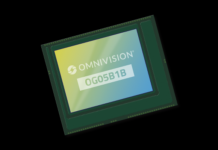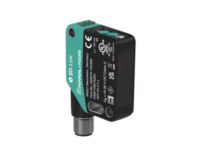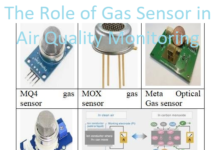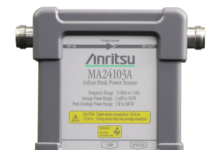
The recent emergence of micromachined complementary metal oxide semiconductor (CMOS) transistors, referred to as Thermal MOS (TMOS), promises significant advancements in the realm of uncooled thermal infrared (IR) sensors. TMOS sensors consist of a thermally isolated suspended transistor designed to absorb thermal radiation, leading to increased transistor temperatures that modify the device’s I-V (current-voltage) characteristics.
What distinguishes TMOS from other traditional thermal IR sensors is its active sensing element, yielding superior temperature sensitivity. Given the exponential growth of the Internet of Things (IoT) and the ubiquity of smart home technologies, the demand for efficient, cost-effective thermal sensors—especially for uncooled IR sensors—has surged.
TMOS, with its compatibility with micro-electro-mechanical systems (MEMS) technology, paves the way for seamless integration with standard CMOS processes and is poised to revolutionize contactless temperature measurement applications.
This article delves into the nuances that differentiate TMOS sensors from the more traditional passive infrared (PIR) and thermopile sensors and considers whether these other sensors are still a viable option for new thermal sensing applications.
The Electromagnetic Spectrum
Before delving into the inner workings of thermal IR sensors, let’s review what IR radiation is.
IR is part of the electromagnetic spectrum (EM) that encompasses all types of radiation. EM radiation is present everywhere and is a form of energy best described as a flow of weightless particles known as photons. These photons move in a wave-like manner in a vacuum at the speed of light. Each photon carries a specific amount of energy, and those energy levels distinguish the various types of radiation. Radio waves (AM and FM) have low-energy photons, while microwave photons possess slightly more energy than radio waves. IR photons have even higher energy, followed by visible light, ultraviolet rays, X-rays, and finally, the most energetic of all, gamma rays (Figure 1).
Figure 1: The electromagnetic spectrum (EM) encompasses all types of radiation according to their energy level. (Source: Inductiveload, NASA: https://commons.wikimedia.org/wiki/File:EM_Spectrum_Properties_edit_librsvg.png, edited by author)
The visible light emitted by lamps and LEDs that help us see, and the Wi-Fi® and 5G signals used to transmit data and video, are all forms of EM radiation. The IR portion of the EM spectrum lies between the trailing edge of the red visible light and the start of microwave radiation. The IR spectrum is further divided into three portions, referred to as near-infrared (NIR), mid-infrared (MIR), and far infrared (FIR).
All objects (bodies) emit some form of IR radiation. Emissivity is a measure of how effectively a body or material emits thermal radiation compared to an ideal “black body” that absorbs and emits all radiation that falls upon it. IR emissivity values are between 0 (for a perfect reflector with no emission) and 1 (for a perfect black body). No real material has an emissivity of exactly 1 across all IR wavelengths, but many materials can have high emissivity. For example, certain paints, coatings, and oxidized metals can have an emissivity above 0.9, while human skin has emissivity levels of 0.95 – 0.98, making it almost as good an emitter as a black body (Table 1).
Table 1: Approximate emissivity levels for various materials. A material with high emissivity will absorb and emit radiation more effectively than one with low emissivity. These figures are primarily for infrared wavelengths since emissivity varies with wavelength. (Source: Author)
| Material | Emissivity (Ɛ) |
| Human skin | 0.95 – 0.98 |
| Green vegetation | 0.92 – 0.96 |
| Dry soil | 0.90 – 0.95 |
| Water | 0.92 – 0.96 |
| Glass | 0.84 – 0.94 |
| Wood | 0.80 – 0.95 |
| Aluminum, polished | 0.03 – 0.10 |
Emissivity is crucial in temperature measurement, especially with devices that detect and measure thermal IR radiation. Temperature readings can be inaccurate if a material’s emissivity is not considered. This is because these instruments assume a certain emissivity level, often close to that of a black body, when, in fact, real-world materials might not emit as efficiently.
Types of IR Sensors
There are a myriad of IR sensors and corresponding applications, but focusing on those used to detect and measure thermal IR, we encounter these main types of thermal IR sensors, categorized based on their functionality and application.
Thermopiles
A thermopile is a collection of thermocouples connected in series or parallel. A thermocouple consists of two different conductors made from different metals connected at two junctions. A voltage is generated when there’s a temperature difference between the junctions, known as the Seebeck effect. In a thermopile sensor, IR radiation from an object strikes the sensor’s surface and heats one of the junctions while the other remains cooler. This temperature difference generates a voltage proportional to the amount of infrared radiation striking the sensor.
Thermopile sensors are primarily used for contactless temperature measurements. They can be found in infrared thermometers, ear thermometers, and some HVAC applications—like gas burners—to measure the temperature of objects or surfaces without physical contact.
Passive Infrared Sensors
Passive infrared (PIR) sensors use pyroelectric crystal materials, like lithium tantalate (LiTaO3) or lithium niobate (LiNbO3), to sense IR radiation changes and convert them into electrical signals. These sensors employ a Fresnel lens to focus the IR onto the pyroelectric material, and they have other components for signal processing, such as amplifiers and comparators. PIR sensors passively detect thermal IR radiation from moving objects within their field of view (FoV), typically working within a 2–14µm wavelength range.
As previously stated, humans emit a high amount of IR radiation, which is why PIR sensors are often used in human motion detection systems. When a human (or animal) walks past the sensor, it detects a sudden change in the ambient IR radiation, which triggers the sensor.
The most common use for PIR sensors is motion detection for security alarms. Home automation is another common application of PIR sensors. For instance, a PIR sensor can switch on lights when someone enters a room. They can also be used as energy management devices to turn off unneeded lights or reduce heating and cooling in unoccupied spaces. Another popular application includes wildlife cameras that are triggered to take a picture when an animal passes by.
Infrared Imaging Sensors
Since all objects emit IR radiation, the hotter something is, the higher the emissivity. IR imaging sensors convert detected IR radiation into a visible image based on temperature differences. These sensors can visualize temperature variations that are imperceptible to the human eye.
There are two main types of IR imaging sensors:
- Uncooled IR Sensors operate near room temperature using resistive, ferroelectric, or other techniques. They are less precise than cooled detectors but are more robust, compact, and affordable. Emerging TMOS sensors fall within this type.
- Cooled IR Sensors require cryogenic cooling, often to very low temperatures. They offer superior performance, sensitivity, and can detect smaller temperature differences, but they are bulkier and more expensive.
The primary applications of IR imaging sensors are heat mapping and night vision. For example, IR imaging sensors enable thermal imaging devices used by firefighters to see through smoke, search for people at night, or detect hot spots in fires. The military and law enforcement employ night vision devices for night operations, navigation, and surveillance. Maintenance personnel use thermal imaging to detect overheating components in machines or electrical systems, indicating potential failure points. The medical industry uses medical imaging devices driven by IR imaging sensors for detecting inflammation, poor blood flow, or variations in patient body temperature.
Other IR imaging applications include:
- Remote Sensing: satellites equipped with IR imaging sensors can monitor environmental changes, vegetation health, or natural disasters like forest fires.
- Automotive: some vehicles incorporate IR imaging for advanced driver assistance systems (ADAS) to detect pedestrians or obstacles during nighttime driving.
- Building Inspection: IR imaging sensors can detect heat leaks, moisture, or structural issues in buildings.
- Security and Surveillance: alarm systems can monitor areas in low-light conditions or detect intruders based on body heat.
- Agriculture: farming is lent a big hand in assessing crop health, irrigation needs, or detecting pests or diseases in fields.
- Research and Development: studies investigating heat distribution in various materials or processes can employ IR imaging sensors.
Given all these applications, it’s clear that the ability to visualize temperature differences opens numerous possibilities across a wide range of industries and research areas.
Advantages of TMOS Sensors
TMOS sensors are advanced presence and motion detection devices ideal for applications like security systems, home automation equipment, and IoT devices. The key advantage of a TMOS sensor is its ability to use thermal transistors to detect both moving and stationary objects. A TMOS sensor’s detection mechanism relies on the thermal MOSFET’s sensitivity to the heating effects of an IR incident on its gate. The gate is thermally insulated using MEMS fabrication. When the incoming IR radiation in the FoV reaches the thermally insulated transistor gate, the IR energy alters the bias of the MOS transistor, enabling the system to sense the temperature of nearby objects or people.
The TMOS operating mode is powered at a sub-threshold voltage below the level needed to turn the transistor fully on. In this mode, the drain-source current is highly sensitive to temperature variations. This sensitivity allows the sensor to detect infrared emissions from humans, regardless of movement.
Unlike conventional PIR sensors, which require motion to produce a measurable response, TMOS sensors can detect stationary objects. Another advantage of TMOS sensors is their simpler construction. PIRs normally require a Fresnel lens to collimate the incoming IR radiation onto the pyroelectric sensor to detect moving objects, but the TMOS sensor allows for lens-free designs.
Also, the TMOS sensor’s integrated design is a huge advantage. The TMOS sensor integrates both the thermal MOSFETs and digital readout circuitry efficiently on the same chip using silicon-on-insulator (SOI) CMOS technology. SOI is crucial for micromachining to thermally isolate the TMOS, ensuring accurate temperature sensing.
Like PIR sensors, TMOS sensors are well-suited for security systems and home automation. But, with their enhanced detection capabilities, TMOS sensors can improve the reliability of security alarms, especially in situations where a person might remain stationary for extended periods. In home automation applications, TMOS sensors can be used in devices to offer more consistent and precise control, depending on human presence. Additionally, the ultra-low-power nature of TMOS sensors can benefit battery-operated IoT devices, making them an ideal choice over the traditional PIR sensors.
Featured Products
This week showcases thermal IR sensors from STMicroelectronics and Broadcom. Both products represent the latest innovation in TMOS technology.
The STMicroelectronics STHS34PF80 is a high-sensitivity IR sensor that is uncooled, factory-calibrated, and has an operating wavelength between 5µm and 20µm. This cutting-edge IR sensing solution is housed in a compact 3.2mm x 4.2mm x 1.455mm 10-lead package. The STHS34PF80 can effortlessly detect human presence up to 6 meters away without a Fresnel lens. Uniquely designed, it zeroes in on an object’s absolute temperature within an 80° FoV and processes the data via its ASIC. Harnessing advanced TMOS technology, it keenly captures even the subtlest temperature shifts, transforming them into precise electrical signals for seamless processing. Plus, with its integrated smart algorithm, it accurately discerns between stationary and moving objects. Additionally, the sensor offers various output data rates (ODRs), ranging from 0.25Hz to 30Hz, has a one-shot mode, and is compatible with SMD mounting. Whether it’s for home automation, security systems, or contactless temperature monitoring in the IoT sphere, the STHS34PF80 is a top-tier choice for next-gen thermal imaging applications.
The Broadcom® AFBR-S6EPY eZPyro™ Pyroelectric IR sensor for gas sensing is an advanced IR sensor that is part of the larger eZPyro family, but what makes it special is its ability to sense at wavelengths beyond 5μm. This means it can detect more types of gases, like anesthetics, refrigerants, and exhaust gases. Its high sensitivity and speed help it detect gases quickly and accurately while maintaining its stability and reliability for a long time with little maintenance. The AFBR-S6EPY uses low power but remains highly effective, so devices last longer. Its flexible design allows its settings to be adjusted to fit many IR thermal applications. The device comes with different filters and can work in sync with other sensors using the common I2C connection, making it easy to add to devices. In short, the eZPyro™ SMD+ is a small, efficient, and versatile IR gas sensor.
Tuesday’s Takeaway
As the world of thermal infrared sensing evolves, the advancements in TMOS sensor technology represent a significant leap forward in the realm of infrared thermal detection. With its active sensing element, superior temperature sensitivity, lens-free construction, and the ability to detect stationary objects, TMOS sensors offer distinct advantages over traditional PIR sensors. This, combined with the growing demand for efficient, uncooled, cost-effective thermal sensors in the IoT and smart home sectors, positions TMOS as a potential game-changer in contactless temperature measurement applications.
However, while TMOS sensors introduce an exciting frontier in IR sensing, PIR sensors continue to hold a significant place in certain applications with their proven reliability and specific applicability. Balancing the strengths of both TMOS and PIR sensors allows us to harness the best of both worlds in infrared technology.


















